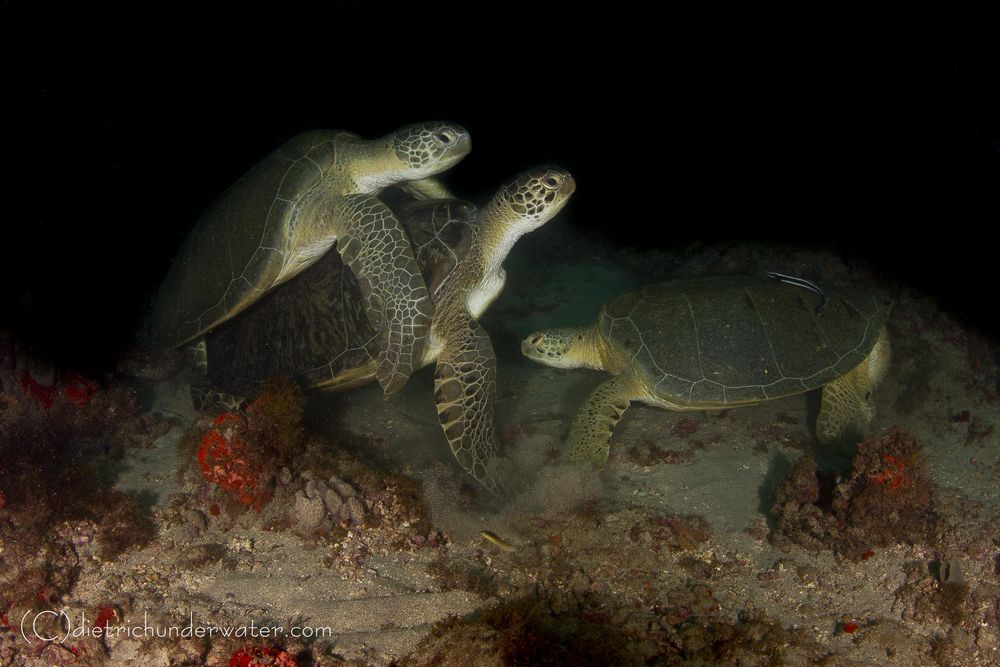Diving in South Florida is special experience. From day to day I never know what wonder I’ll see beneath the water. Earlier this year I moved about an hour north from Fort Lauderdale to Jupiter and have found more amazing diving thanks to the west wall of the Gulf Stream traveling through the area.
One of the experiences I never tire of is diving with sea turtles. Quiet and graceful, ranging from a small hawksbill to a larger loggerhead or the largest green, turtles help make every dive more memorable. Sea turtles can be found in all oceans except for the polar regions of the world, and are believed to have been on earth for more than 100 million years — since the time of the dinosaurs.
I’ve been lucky enough to swim with sea turtles here in Florida, the Cayman Islands and in Australia. Generally solitary creatures (except for when ready to mate) sea turtles swim slowly and methodically, sometimes resting on the reef or sleeping under a ledge. My experiences run the gamut of a turtle having zero interest in having his picture taken to a turtle coming back to me several times, giving me the opportunity to get just the right shot. I’ve always found sea turtles — regardless of the species — to be at the same time gentle and fearless, swimming cautiously forward but not wavering from their path. And above all I find their presence very calming — the underwater world seems to get a bit quieter when a sea turtle comes into view. Other divers seem to share the love of sea turtles, as well. I’ve lost count of the number of times a single turtle sighting has been the highlight of a post-dive conversation/celebration, regardless of everything else seen on the dive … that never gets old.
Four of the seven species of sea turtles are considered “endangered” or “critically endangered.” It’s been difficult for experts to narrow down population numbers as once they hatch, many turtles stay in the ocean and don’t return to shore. Much of what is known of population and behavior is taken from hatchlings and females that leave the water to lay their eggs. While the turtles have natural predators, humans are their biggest threat. Fishing nets, the black market trade in turtle eggs and meat and beach development all lend to declining sea turtle populations. There are currently many conservation efforts, from nest monitoring and protection, fishing gear modifications and protection by state and federal laws, as well as international treaties that have been implemented to help protect all species of sea turtles. These continued efforts, as well as simple things we can all do such as not disturbing nests, keeping plastic bags off the beach and out of the ocean and fishing responsibly, can help bring our turtle population back to thriving numbers so our future generations of divers can experience these gentle creatures with the same joy and wonder as we have.
Source: scubadiving.com







